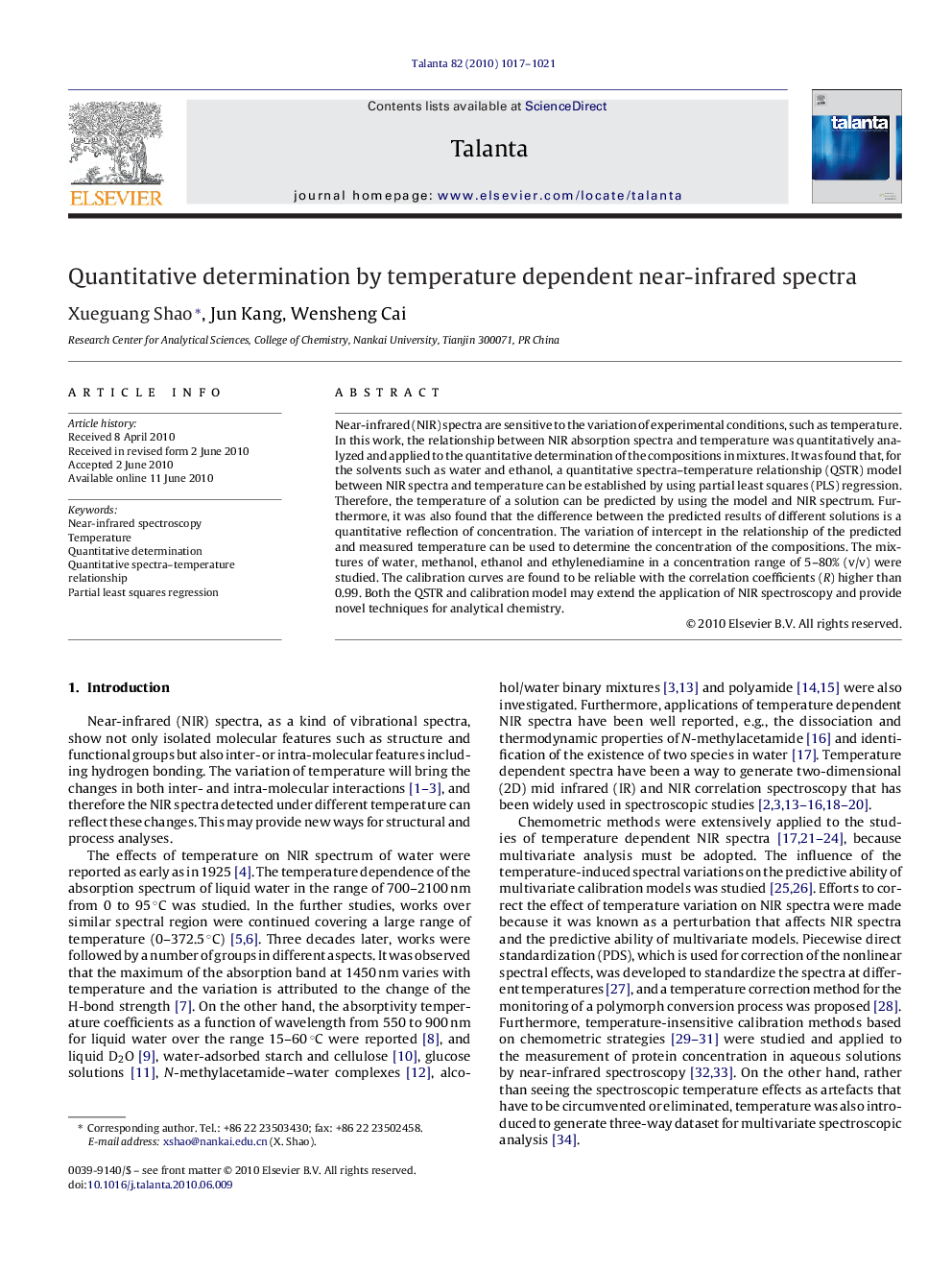| Article ID | Journal | Published Year | Pages | File Type |
|---|---|---|---|---|
| 1244604 | Talanta | 2010 | 5 Pages |
Near-infrared (NIR) spectra are sensitive to the variation of experimental conditions, such as temperature. In this work, the relationship between NIR absorption spectra and temperature was quantitatively analyzed and applied to the quantitative determination of the compositions in mixtures. It was found that, for the solvents such as water and ethanol, a quantitative spectra–temperature relationship (QSTR) model between NIR spectra and temperature can be established by using partial least squares (PLS) regression. Therefore, the temperature of a solution can be predicted by using the model and NIR spectrum. Furthermore, it was also found that the difference between the predicted results of different solutions is a quantitative reflection of concentration. The variation of intercept in the relationship of the predicted and measured temperature can be used to determine the concentration of the compositions. The mixtures of water, methanol, ethanol and ethylenediamine in a concentration range of 5–80% (v/v) were studied. The calibration curves are found to be reliable with the correlation coefficients (R) higher than 0.99. Both the QSTR and calibration model may extend the application of NIR spectroscopy and provide novel techniques for analytical chemistry.
